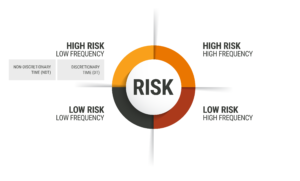Editor’s note: This article is part of a series. Click here for the previous article.
As we progress in this series of articles on risk management, I need to take a quick break to remind you of something. The vast, vast, vast majority of things you do in public safety operations (around this great nation), you are doing right.
I emphasize this because I was just reading some class evaluations from a recent program and came across the comment, “He is too negative about our profession—we need more positive presenters.”
I sent the writer of this comment an email apology telling her that if I come across as being negative, I am so sorry. The vast majority of things you do, you are doing right. The problem is when things don’t go right in public safety, there are nasty, nasty consequences. That’s why I spend so much of my time—in presentations and in these articles—addressing the bad stuff and how to prevent it.
Which brings us to the continuation of the discussion on the importance of recognizing the tasks in every job description that fall into the top left box of our risk matrix:

The good news is that most of what you do goes in the other three boxes on the matrix—tasks that either carry low risk or tasks that carry high risk, but you do them a lot, so there’s less chance something will go wrong. If I had to hazard a guess, I would say that approximately 5% (that is 5 out of 100, Lieutenant) of the tasks you do in your job fall into the top left box—high risk, low frequency.
Although high-risk, low-frequency tasks are a small percentage of what you do, it’s critical you recognize and identify them. Remember the simple definition of risk management I laid out way back in the second article in this series? Recognize, Prioritize and then Mobilize. Recognition is the “R” in RPM.
So how do you identify the tasks that fall into this top left box? In grad school some 43 years ago, I was taught the importance of the risk assessment. Suffice it to say there are two ways to do a risk assessment. There is the complex way that will cost you millions of dollars and many years of work—and there is the simple way, which you can do in less than a day and it will cost you nothing.
Just because it has not happened in your agency does not mean it cannot happen in your agency.
The simple way is the “actuarial risk assessment”—studying data of what’s happened in the past (particularly the bad things) to try to predict what will happen in the future. Actuarial studies are based on one of the basic rules of risk management: The errors you are going to make can be predicted from the errors already made.
If you take the time to study the past tragedies in your job (deaths, injuries, lawsuits, embarrassments and criminal issues) and look for the event that ended up causing the tragedy, most of the time (there are always exceptions) the underlying event falls into the top left box.
The easiest way to do this actuarial risk assessment is to call the “keeper of records” and ask this question: In this job, how have we been killed, hurt, sued, embarrassed, indicted or fired? The errors you will make can be predicted from the errors already made!
If you want to know how dispatchers get indicted, all you need to do is study how they have been indicted. If you want to learn how janitors will poison themselves (and others), all you need to do is study how they have already poisoned people. If you want to learn how police pilots will crash a helicopter, all you need to do is study how they have already crashed helicopters.
Clearly, I could go on and on and on—but you get the drift. If you want to learn how people in your job are going to get in trouble, study your past tragedies. You will come up with a very, very short list of events that are overrepresented in tragedy—and most of the time they will fall into the “top left box.”
Now you may be thinking, “Well Gordon, we have never had a dispatcher indicted, or a janitor who created poison, or a helicopter pilot crash!” Just because it has not happened in your agency does not mean it cannot happen in your agency.
You need to expand your thinking and look at “similarly situated agencies” and the tragedies they have experienced. There are scores of other police departments just like your agency in and you need to look at their tragedies also.
I am so grateful that we have websites today that collect such data and share it with all of us. The law enforcement websites I visit every day are Officer Down Memorial Page, Police1 and CalibrePress—and there are similar ones for fire, corrections and EMS. These sites collect data from around America every day and post it so you can learn from the tragedies affecting people in other agencies who hold jobs similar to yours.
So there you have it for this piece: You need to recognize the specific tasks in your job that fall into the top left box. Assuming you do 1,000 things in your job, the list you make will be less than 50—5% of the total.
Once you have recognized these tasks, it is time for the “P” in RPM—prioritization. And that will be the topic for my next article.
 TIMELY TAKEAWAY—Between reading this article and the next one, identify the list of events that fall into your top left box. Then ask some of your co-workers (who do the same job you do) to do the same. Now compare the two lists. There will come a time in your career when you will be so grateful you did this exercise.
TIMELY TAKEAWAY—Between reading this article and the next one, identify the list of events that fall into your top left box. Then ask some of your co-workers (who do the same job you do) to do the same. Now compare the two lists. There will come a time in your career when you will be so grateful you did this exercise.



